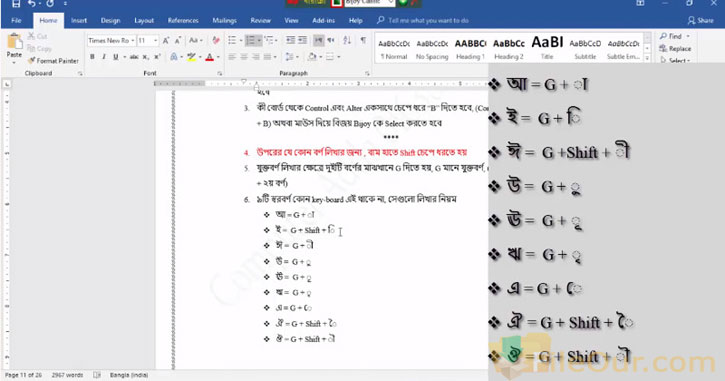

#Bijoy bangla keyboard for windows 7 software
Subsequent versions of the software have also been named in a similar fashion, including Bijoy Ekushey (Bijoy 21) and Bijoy Bayanno (Bijoy 52), commemorating February 21, 1952, an emotional date in the Bangla Language Movement, which ended in the recognition of Bangla as an official language of Bangladesh.įebruary 21 is not only a very important event in the history of Bangladesh and all Bangla-speaking people. Another version of Bijoy was named Bijoy Ekattor (Bijoy 71) in reference to the historical Bangladesh War of Independence of 1971. In that regard, he chose to name his software and keyboard layout “Bijoy” (Bangla for “victory”) and planned the release of the first version of Bijoy to coincide with the Victory Day of Bangladesh on December 16, 1988. Jabbar believes that the success of creating the right brand name rests upon how effectively these names can touch the heart of the people and at the same time reflect the characteristics of the products. Moreover, the Bijoy Bangla Script Interface System is also compatible with Asamese script. The software is also compatible with Unicode (BDS 1520: 2018) and ASCII (BDS 1935) coding systems. With humble beginnings of one font family, Bijoy Bangla Software now hosts more than 110 font families.

#Bijoy bangla keyboard for windows 7 android
Jabbar’s popular Bijoy Bangla keyboard layout (Photo: Ananda Computers)Īlthough the Bijoy Bangla Software was initially developed for the Macintosh operating system, it was later released for Windows, Linux and Android operating systems. Jabbar’s own team of programmers in Bangladesh, while the Bangla keyboard layout and font designs were created by the inventor himself. Devendra Joshi, but later developed by Mr. The software was initially programmed by an Indian programmer named Mr. A breakthrough came one and a half years of continuous work with the release of the first version of the Bijoy Bangla Software in 1988. Jabbar wanted to overcome many of the limitations associated with the existing options by developing a new Bangla interface with a new layout. At the time, there were already at least two other Bangla keyboard layouts: the “Munir” keyboard, which was developed in 1969 for use in typewriters and the “ShahidLipi” which was the first complete Bangla font for computers. Jabbar faced was accommodating the hundreds of Bangla characters, including additional vowels and consonants and consonant conjuncts, within a standard Macintosh keyboard in a QWERTY layout. Jabbar was appointed as Minister of the Ministry of Post, Telecommunication and Information Technology in Bangladesh. Jabbar’s pioneering role in the invention of the Bijoy Bangla Script Writing Interface System and promotion of information and communication technology (ICT) has been recognized by the Bangladeshi Government. In fact, the Bijoy Keyboard Layout (BDS 1738:2018) and Bijoy Coding System (BDS 1935:2018) were declared to be the national standard Bangla Script Writing in Bangladesh, making it the only standard for Bangla script writing in the world.ĭespite increasing competition from other Bangla writing systems, Mr.

He started by creating some Bangla fonts and subsequently developing the Bangla software and a Bangla keyboard layout known as “Bijoy.”īijoy has established itself as one of the top Bangla script writing interface systems among a community of 350 million Bangla-speaking people. Jabbar considered ways to overcome the technological limitations of the Bangla script writing system in these industries. He started a computer business in 1987, but technological limitations were particularly constraining for the printing and publishing industries in Bangladesh and other Bangla-speaking regions. He began his career as a journalist in 1972, while still a student. Jabbar is from a rural village in Bangladesh and would later attend the University of Dhaka, where he majored in Bangla Language & Literature. Jabbar has benefited from intellectual property (IP) protection for his widely-used Bangla script writing interface system. The Bijoy Bangla Software and Keyboard Layout grew popular among users, and Mr. Mustafa Jabbar, a Bangladeshi journalist, developed software and a keyboard layout, which greatly changed the printing and publishing industry in Bangladesh. Understanding the need for a feasible Bangla input software and script writing interface, Mr. Key success factors: understanding market demandĪlthough Bangla is the seventh most-spoken language in the world, there was no well-functioning, simple and easy-to-use software for typing in this language until the late 1980s.


 0 kommentar(er)
0 kommentar(er)
